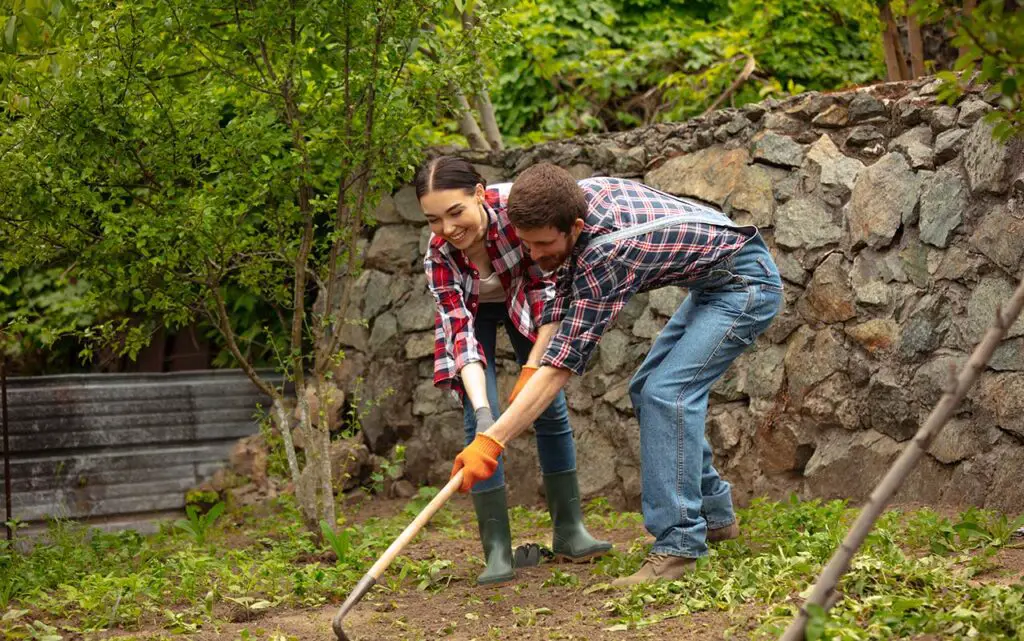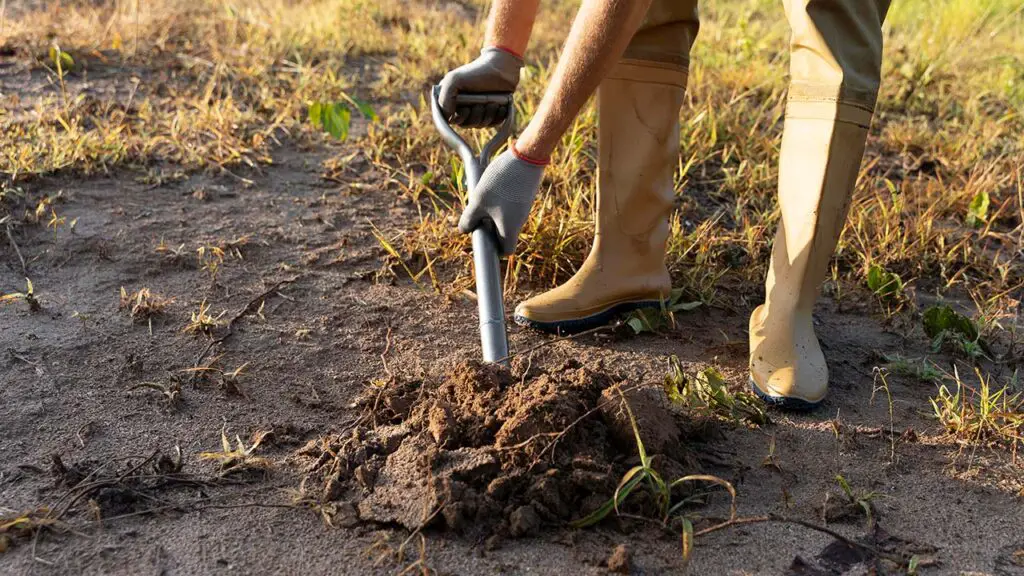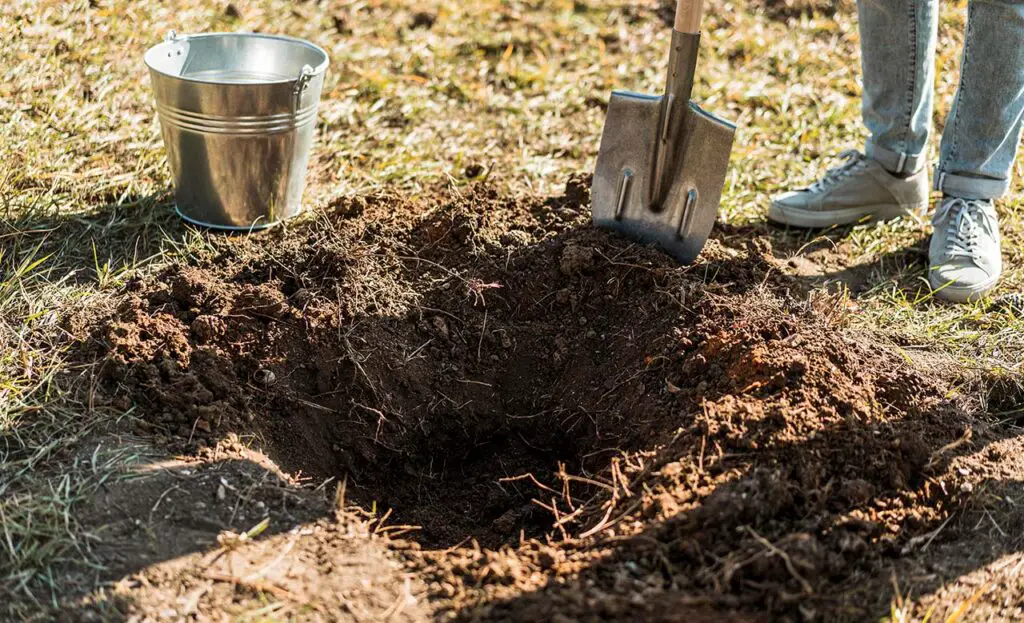How To Dig A Trench For Drainage
It can be unsettling when there is water building up in your yard, both for health and material reasons.
The moisture which settles in the logged areas of your yard can cause erosion to the foundation of your home and wash away valuable landscaping, which results in a massive mess.
As such, digging a trench for drainage is an effective way to deal with this problem and to allow water to flow naturally into preferred outlets.
What Are Trench Drains?

Trench drains are also known as channel drains, and they are an above-ground method of draining clogged water into predetermined outlets using materials entrenched underground.
Like gutters, trenches redirect water from areas where it presents a threat of slips and falls and erosions alike.
Trench drains are connected to waterways that are eco-friendly to redirect water away without necessarily harming the ecosystem.
They can be installed permanently using plastic or steel grate or temporarily and trenching materials ranging from plastics to concrete.
Why Is It Important To Have A Trench For Drainage?
Trenches are very necessary to homeowners as they help prevent water from flooding into the house during heavy rains.
When you have a good ditch for drainage, even the overall appearance of your yard is enhanced.
It is important for you to know how to dig a trench to help with your drainage issues while saving some money.
It can be very unsettling to stay in a flooded house, which is why every homeowner requires a steady drainage system to avoid flooding and stagnant water issues.
The best trench is the one that drains water away from your house without leaving your yard or property damaged.
As such, ensure that the ground naturally slopes away from your house or grade the drainage ditch to descend an inch per 10 feet.
Failure to have a proper drainage trench results in a flooded yard or garden.
This is quite disastrous to both your home and any plants around.
When there is improper drainage, plant roots are drowned, and they rot, which can be averted by having a proper drain pipe installed in a drainage ditch.
How To Dig A Trench For Drainage

Digging a trench for drainage is quite easy and something you can do without necessarily hiring professional help.
When starting, pick out a location near a downspout outlet or a flooded area and end the drain at a place where the water is flowing out won’t lead to erosions.
The following steps are suitable to guide you when digging a trench for your home drainage:
Permit Requirements
Different states and cities have varying permit requirements when it comes to the digging of trenches for drainage.
Some have rules regarding redirection of the water, especially for residents near a lake, creek, or stream.
This is to ensure that the drainage outlet won’t impact negatively on and affect the health and livelihood of your neighbors and their properties.
When planning the course of the ditch, ensure you follow the water’s natural flow along a hill. If there isn’t a natural downslope, then you will have to create one.
The highest point of the trench should be where water is stagnated, and the lowest point should be where the water exists to ensure efficient water flow.
Map Out a Plan First
Whether or not you are an expert in trench igging, you will require to have a layout plan to help with the job.
Having a plan acts as a guide in addition to saving on time and guaranteeing better results.
When mapping out a plan to dig your drainage trench, start by identifying an area where water stagnates a lot or where there is an accumulation; that’s the start point.
The plans should include the direction you intend to direct the surplus water to so that you have a balanced yard.
This is the best one by routing the water downhill from the drenched areas.
Determining The Most Suitable Slope
Trenches should incline downwards and at a minimum of an inch per every 10 feet to ensure effective water drainage.
This slope measurement is recommended to allow water to drain along the gutter naturally.
A downhill slope is the standard recommendation for a drainage trench as it allows water to flow away from the logged areas.
The excess water is normally pushed and moved by a force of gravity which requires a downhill slope.
If you can’t find a natural slope downhill, then worry not; you can create a deep slope to this effect.
You can achieve a perfect slope by marking two stakes at 1-inch intervals each, then point the first stake to the location you want to start digging your drain.
The second stake should face where you want the drain to end.
The next step is to connect both stakes to each other using a string while ensuring they’re well balanced.
Digging The Trench
You can now proceed and start digging your trench if you have all the necessary tools with you.
The most basic requirements for digging a trench for drainage are a landscape fabric, a trencher, and some gravel material.
It is also important to acquaint yourself with the tools before the set a date for starting your trench digging project.
As you do this, ensure that the trench you’re digging will be wide enough to accommodate a drainage pipe comfortably.
A standard trench should be between 9 to 12 inches wide and 18 inches deep.
Laying The Landscaping Material and The Gravel Base

At this point, it is important to use landscaping material as an underlay for the trench.
This helps prevent clogging of the drainage pipe by grasses and plant roots which causes lawn bubbles.
After ensuring you’ve put enough gravel in the trench, then you can rest assured you’ll have a functional drainage system.
Alternatively, you can dig a trench and fill it with gravel, and it can still be used for water drainage.
Fixing The Drain Grate and Installing The Pipe
There are different guidelines for installing certain drainage pipes, so ensure you follow them according to your drain pipe preference.
The drain pipe should connect to the water outlet, and it should be placed with the holes in the drainpipe facing downwards.
This ensures that you achieve the maximum drainage capacity.
Cover Up The Pipe
After a successful installation of the drainpipe, it’s now time to cover it up with gravel.
The recommended amount is about 3-inches which ensures stability and steadiness.
You can add to the protection by using landscape fabric to hold the gravel material in position securely.
Fold Landscape Fabric Over The Gravel
You can then put the excavated dirt somewhere as you may require the topsoil from the ditch for other garden projects.
The bottom of the trench should be filled with large crushed rock or large gravel, which won’t be easily washed away by water when it rains heavily.
Covering The Trench
This is the final step to digging a trench for drainage and a very important one at that.
You should do this with suitable materials such as gravel, bricks, or sand, or you can use grasses to reseed the trench if you want.
If you decide to plant grass in the ditch, use a landscape cloth to cover the gravel at the bottom, adding more stones or gravel to cover the cloth.
It would be best if you placed about an inch of topsoil over the gravel and then plant your grass seeds.